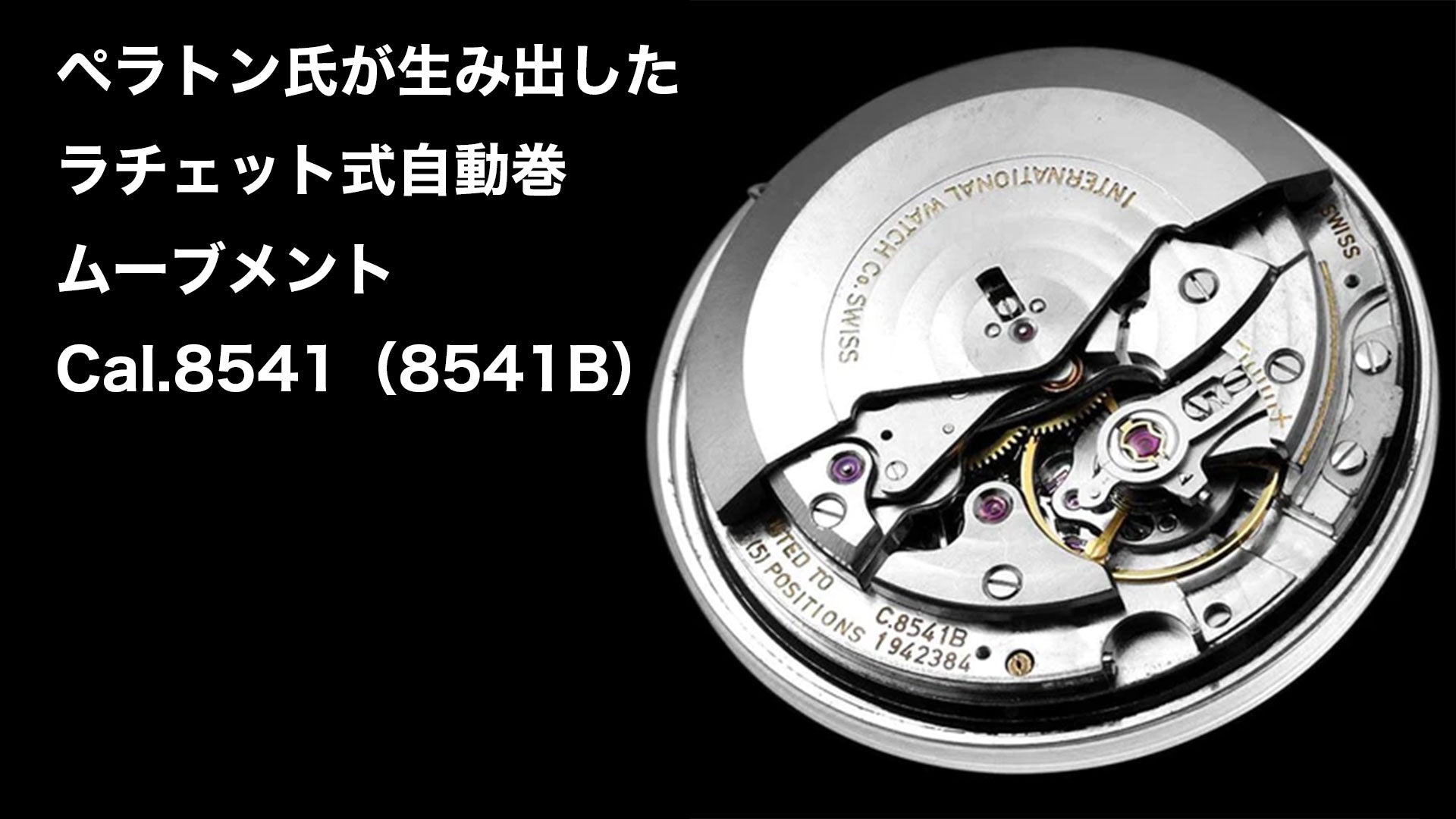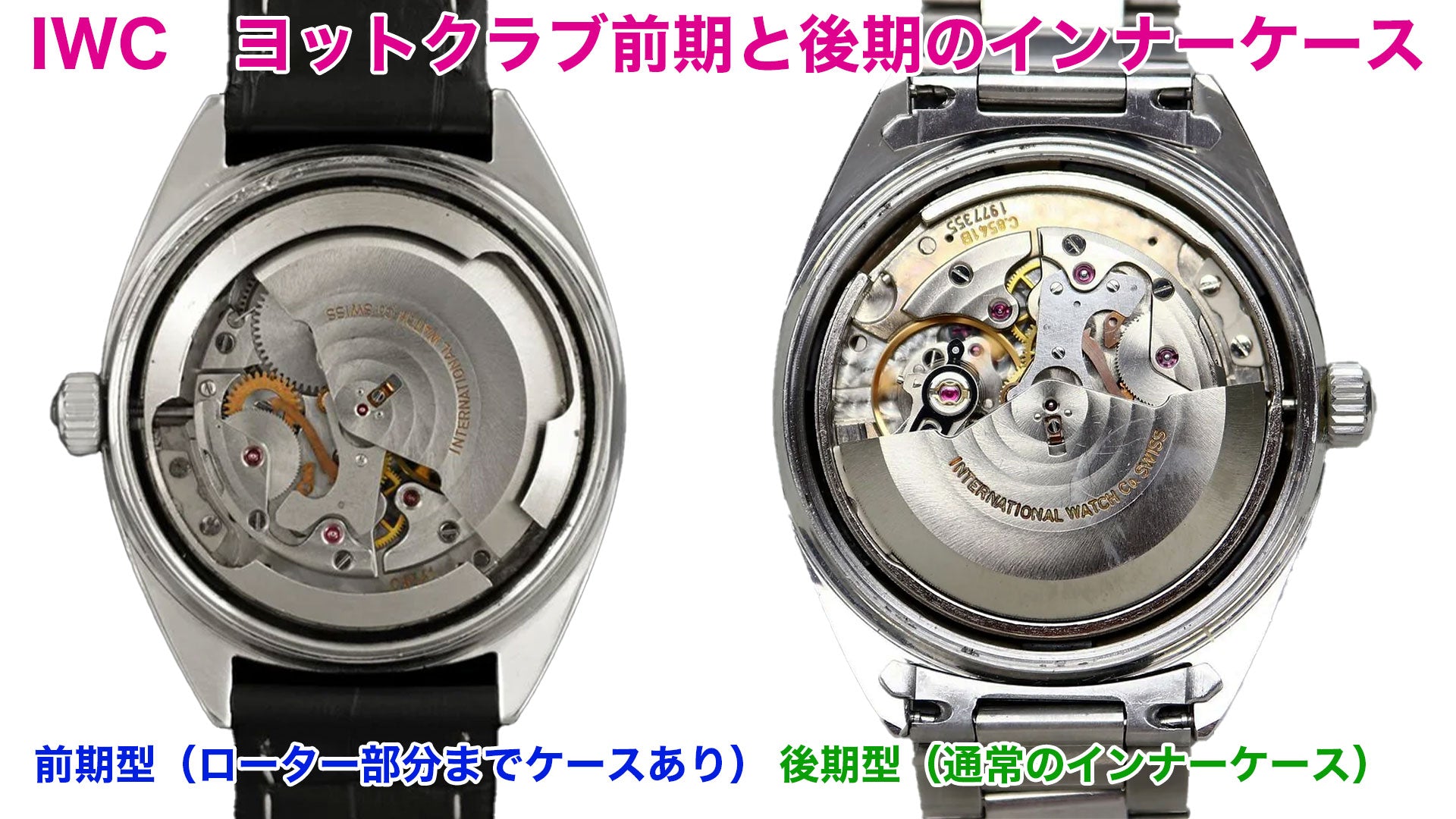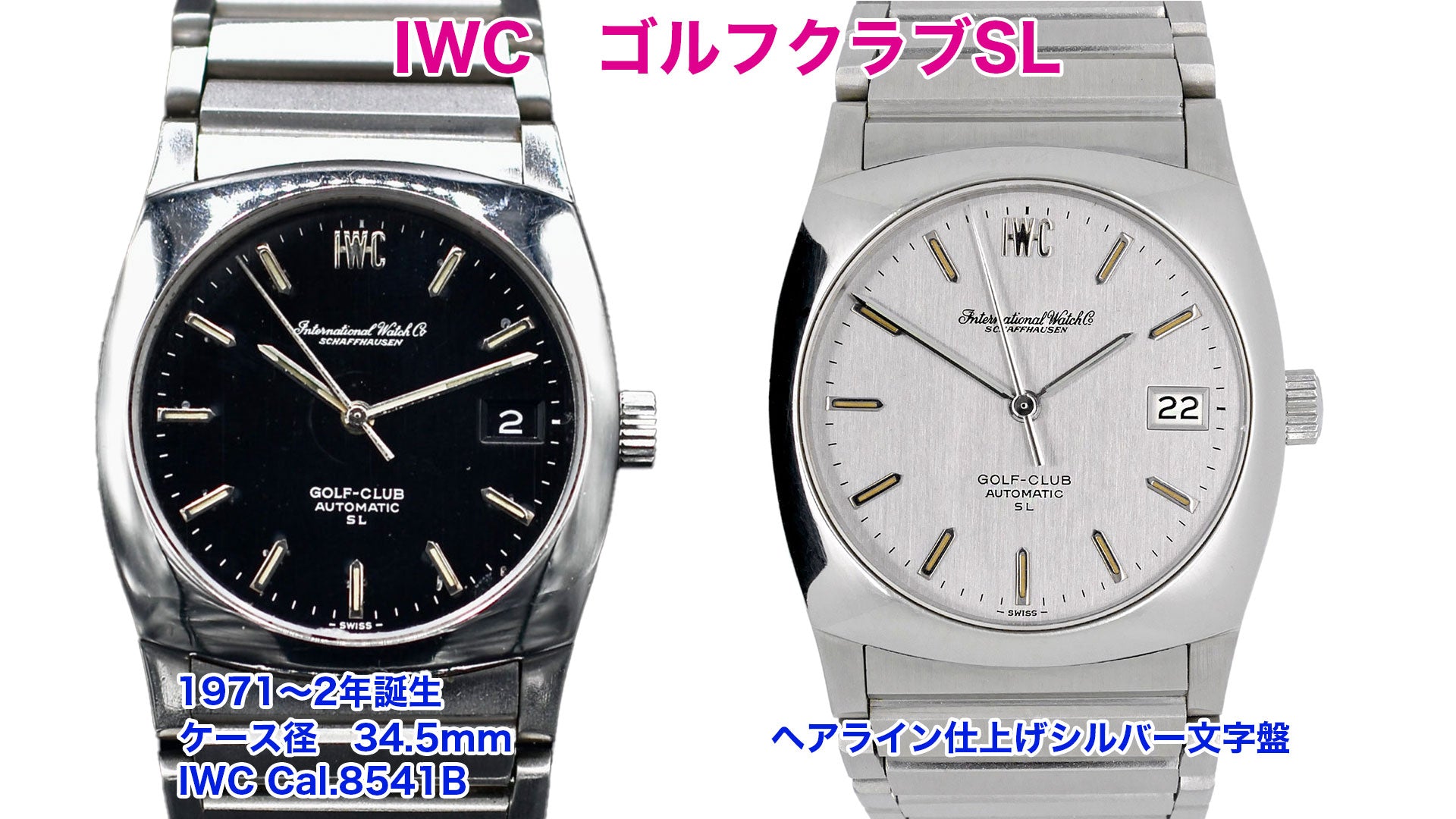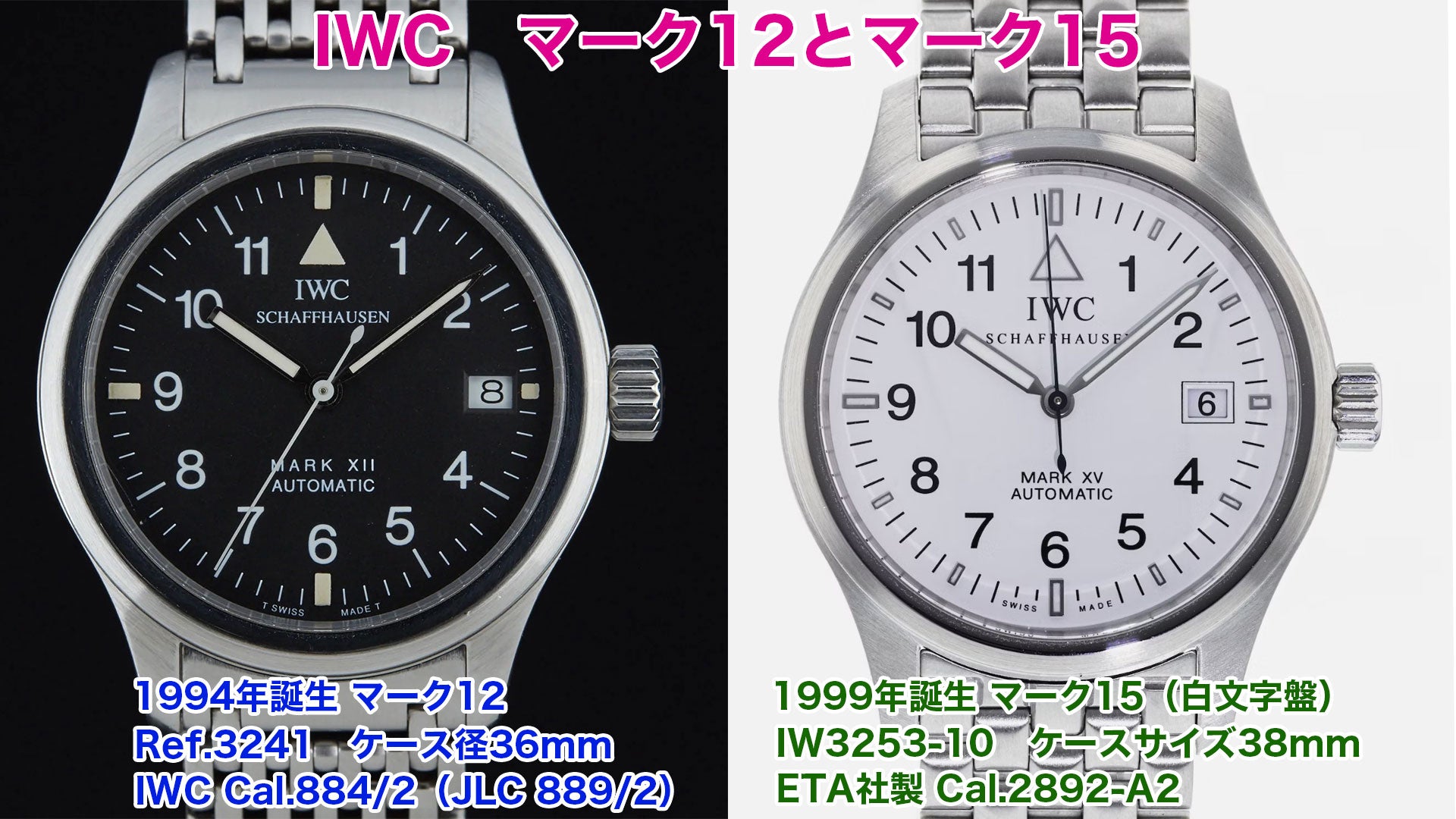Click here to watch the video about the history of IWC (Old Inter) ↓
When looking at vintage watches, one of the brands you will always come across is IWC, and unlike Omega or Rolex, it is a bit of a minor brand, so you probably think it's a good brand without having to learn too much about it.
And that's the end of it.
For those of you who are wondering, here I will explain in a very easy-to-understand way why the IWC brand is said to be so great.
By reading this article, you will understand the appeal of vintage IWC watches and will probably want to own one, so please read to the end.
The History of IWC (Old Inter)
The history of IWC began in 1868 when American watchmaker Florentine Ariosto Jones founded the IWC/International Watch Company in Schaffhausen, Switzerland.
Jones's goal was to produce high-quality mechanical watches by combining advanced American manufacturing techniques with traditional Swiss craftsmanship .
Because the founder was American, watchmaking at that time was heavily influenced by American manufacturing, and gradually This has resulted in the creation of a unique brand image that has been praised as "simple, sturdy and robust."
That is because, The region of Schaffhausen is close to the border with Germany, so it is influenced by German manufacturing practices.
This change to this type of construction occurred in the 1900s, and what we call Old Inter refers to the period from 1930 to 1970, when IWC designed and manufactured its own movements.
So, for now, I'll talk about IWC up until around 1990.
Who was Pellaton, the man who shone during IWC's golden age?

A man named Albert Pellaton, who served as chief designer from 1944 to 1966, had a major influence on the company IWC.
I will explain this later, but I'm sure you've heard the term "Pellaton automatic winding" at least once.
That's the Pelaton.
Mr. Pellaton is a Swiss born in French-speaking Switzerland , and his original philosophy was that "the movement should be robust."
This is the fundamental philosophy of the IWC company, and it would go on to become the strength of its subsequent military and diver's watches.
Therefore, they did not like thin watches, which are the complete opposite of their philosophy, and this led them to design and manufacture them.
That's why IWC doesn't make many thin watches.
However, it was thanks to this man that IWC produced many masterpieces, including the iconic Mark 11, Aquatimer, and Ingenieur.
It can be said that these models are the representative models that you will come across when looking at vintage IWC.
Now, let's take a look at Cal. 89, a representative movement of vintage IWC.
Let's take a look at the Cal.89 movement

This is Cal.89, a representative movement designed by Pellaton.
The Cal.89 was created in 1946 and remained in production until the mid-70s.
In fact, it was also installed in watches released in the 1980s, which means that the movement has been produced almost unchanged for 40 years.
First of all, if you are a fan of IWC watches, you will know that the Mark 11, which was adopted by the Royal Air Force, also contained the Cal. 89, and most of the round stainless steel, 18K models that are available to us today are also equipped with this movement.
For more information on Mark 11, please watch this video:
In terms of the movement position, I feel it is close to Omega's 30mm caliber.
So just how amazing was this Cal.89?
Its features are
・Due to the rising labor costs at the time, parts with high productivity were selected.
- The plate and bridge are thick and designed to be durable.
- Uses shock-resistant Incabloc
・The balance wheel is designed to be large in order to achieve stable accuracy.
From the 1940s onwards, labour costs began to rise gradually, which also had an impact on movement production.
What was needed was a movement that was simple in design, not one that requires many different parts and is complex, yet still durable and precise.
However, contrary to this, the movement is carefully finished.
To make it easier to store in the case, the outer plate has been cut to give it a slope, and each part is decorated with the Côtes d'Et Genève motif.
Despite its simple structure, it is durable and has a beautiful movement.
Because it was designed like this, it has been nearly 50 years since it was last produced, but it still works well if properly maintained, and because it was manufactured for a long time, there are plenty of spare parts available and it is easy to maintain.
This is why cal.89 is so highly rated.
Now let's take a look at the automatic movement that Pellaton created.
What is a Pellaton automatic watch?
The most important thing to understand in this article is this Pellaton movement.

The movement that Pellaton created as the perfect automatic winding was Cal. 8541, and it is said to be his masterpiece.
No matter how much a machine is explained in writing, it is almost impossible to imagine how it works.
First, please watch this video:
I'd like you to listen to the explanation while watching the video, but what's amazing about this movement is that it has a triangular rice ball-shaped axis, like Mazda's rotary engine, attached to a core coaxial with the rotor (the fan-shaped part on top of the movement).
When the rotor rotates, the triangular rice ball on this shaft also rotates.
The triangular rice ball pushes against two roller bearings, moving a huge plate from side to side.
The plate is connected to a claw, and as the plate moves, it hooks and rotates the gear.
Of course, this works in both directions so winding is very efficient.
This is called a ratchet system, and it is a method of converting the rotation of the rotor into kinetic energy of a part called a ratchet.
The simple structure makes it easy to make it thin, and since it winds up with a durable claw instead of a gear, it is also resistant to wear.
Therefore, this automatic winding mechanism has high shock resistance, excellent winding efficiency, and unparalleled durability .
The movement is visually beautiful, making it a popular mechanism.
The disadvantage is that although the thickness is not that great, the diameter of the movement is larger to compensate.
Considering modern standards, this isn't a noticeable drawback at all.
The "Pellaton automatic winding", which adopted IWC's ratchet system, is said to be the perfect form of automatic winding , and is a movement that is still highly regarded today.
This automatic movement was chosen to be installed in the Ingenieur, a civilian version of the Mark 11.
For more information on Injunior, please watch this video:
For now, it will be enough if you understand that the movements made by this person, both hand-wound and automatic, are "extremely efficient at winding and are very robust movements."
Subsequent changes at IWC
With Pellaton's retirement in 1966, the company's direction changed again.
After Pellaton retired, IWC no longer had its own thin movements, and so began to use movements from other companies, even though the global trend was shifting toward thinner watches.
To give a representative example: Jaeger-LeCoultre and It was decided that the ETA brand would be installed.
It was around this time that IWC stopped designing and manufacturing its own movements, which is why the term "Old Inter" is said to have lasted until around 1970.
It was around this time that the quartz crisis occurred, and the company was briefly on the brink of bankruptcy, but it managed to weather that and continues to operate to this day.
That doesn't mean, however, that IWC has lost its appeal.
Since then, they have produced the Porsche Design Ocean 2000, and the GST collection has also seen the birth of some fantastic works, including a collaborative chronograph with Prada and an Aquatimer made from titanium.
So, from here on, let's take a look at some of IWC's classic models up until 2000.
Check out IWC's classic models!
IWC has a wide range of beautiful watches, from old to modern.
Among them, we will introduce some models that we think you should definitely check out.
IWC Yacht Club

The Yacht Club was established in 1967.
It adopts the C-line design that was popular at the time, and was named "Yacht Club" because it was capable of withstanding the strong impacts that are common in yachting sports.
As mentioned earlier, the Pellaton automatic winding system has a robust structure, but at the same time, it is designed to absorb shocks by using an inner case.
Now, please take a look at this image↓

There are early and late models of Yacht Club inner cases.
The earlier model's inner case is designed to partially cover the rotor side, making it appear very robust.
The later model has a standard inner case, but the purpose is apparently to reduce weight.
It's these small differences that make vintage watches so fascinating.
Polo and Golf Clubs
With the birth of the Royal Oak in 1972, various companies followed suit and created luxury sports watches.
IWC is famous for the Ingenieur Jumbo SL, but because of its 40mm case size, it was completely unpopular at the time and ended up being a flop.
By the way, what is the SL Line? 『 It is an abbreviation of the initials of " Steel Line " and refers to a model made entirely of stainless steel to compete with the Royal Oak, which is made entirely of stainless steel.
However, there is another masterpiece hidden in the shadows in the same SL Line.
These are polo clubs and golf clubs.
The Polo Club was born in the same year as the Royal Oak in 1972.

This is also a sport that involves strong impacts, and yet this name was given to it as it is still tough enough to be used.
It is equipped with the IWC Cal. 8541B, which is also installed in the Yacht Club, and along with its wide case, it is highly robust.
Golf club

Designed by Gerald Genta, it features a square case and bracelet reminiscent of the 1970s.
However, thin watches were the trend at the time, so such a large watch was not very popular, and it is said that only about 1,000 were actually produced.
The case diameter is 34.5mm, which I think was correct for the size at the time, but luxury sports watches, including the Royal Oak, didn't start to become popular until a little later, so perhaps all-stainless steel wasn't yet accepted.
Therefore, even though it is such a cool watch, it is hardly in circulation anywhere in the world.
Yacht Club II

Five years after the birth of the Injunior in 1972, the Yacht Club was born in 1977. II '
This is the next generation of the Yacht Club explained earlier, and its design is similar to Girard-Perregaux's Laureato.
That's because both this model and the other one were designed by Genta, so they have a similar feel.
At the time, the quartz crisis was happening, so the role given to this model was Rather than going in the most luxurious direction possible, as Audemars Piguet did, the idea was to create world-class mechanical watches and then incorporate innovative quartz technology into complementary hybrid models.
The quartz models are equipped with the in-house Cal. 2250, while the automatic models are equipped with the IWC Cal. 884/2, a converted version of the ultra-thin JLC Cal. 889/2.
As such, it was equipped with two different movements and was positioned as a formal alternative to the Ingenieur, which was intended for serious sports enjoyment.
However, as you know, production was very limited as the watch was not able to keep up with the trends of the time, so we rarely get our hands on this wonderful model.
IWC Mark 12 and Mark 15 Albino

Mark 11 has already been fully explained in the previous video, so here we will introduce the albino Mark 12 and Mark 15.
The Mark 12 was born in 1994, and is already a 30-year-old model, making it a vintage item.
Only consumer products exist, but the case diameter is 36mm and the dial design is This is a very popular model as it has a design that is closest to the Mark 11.
The second one is the albino model of Mark 15.
This model was released in 1999, five years after the birth of the Mark 12, and is the successor to the Mark 12.
As for this Mark 15, only a very small number of models with a white dial were produced.
Not only is it white, but the indexes are framed, giving it a different appeal from the regular model.
You can find them now if you look hard enough, but they are much rarer than the black dial versions, so prices are likely to naturally rise in the future.
summary
Today we are introducing vintage IWC models.
I've explained a lot of things, but the appeal of vintage IWC watches is that they are made with high precision and durability, which is why they are still popular today.
I think there's no problem with summarizing it like that.
I believe that the philosophy of "making robust watches" that was the foundation of Pellaton is still firmly rooted in IWC today.
Although it is not a top-class well-known brand, it is a brand with the right purpose, with careful construction from the design stage onwards.





